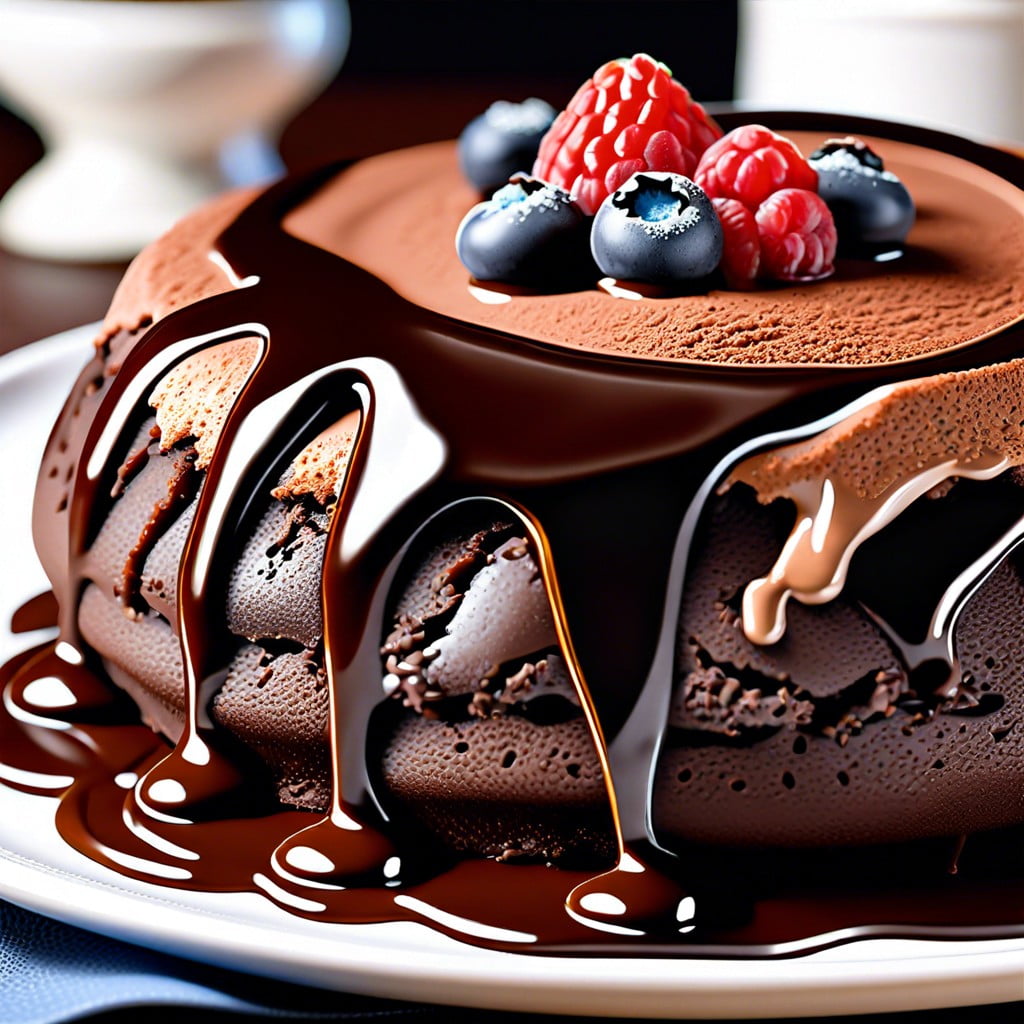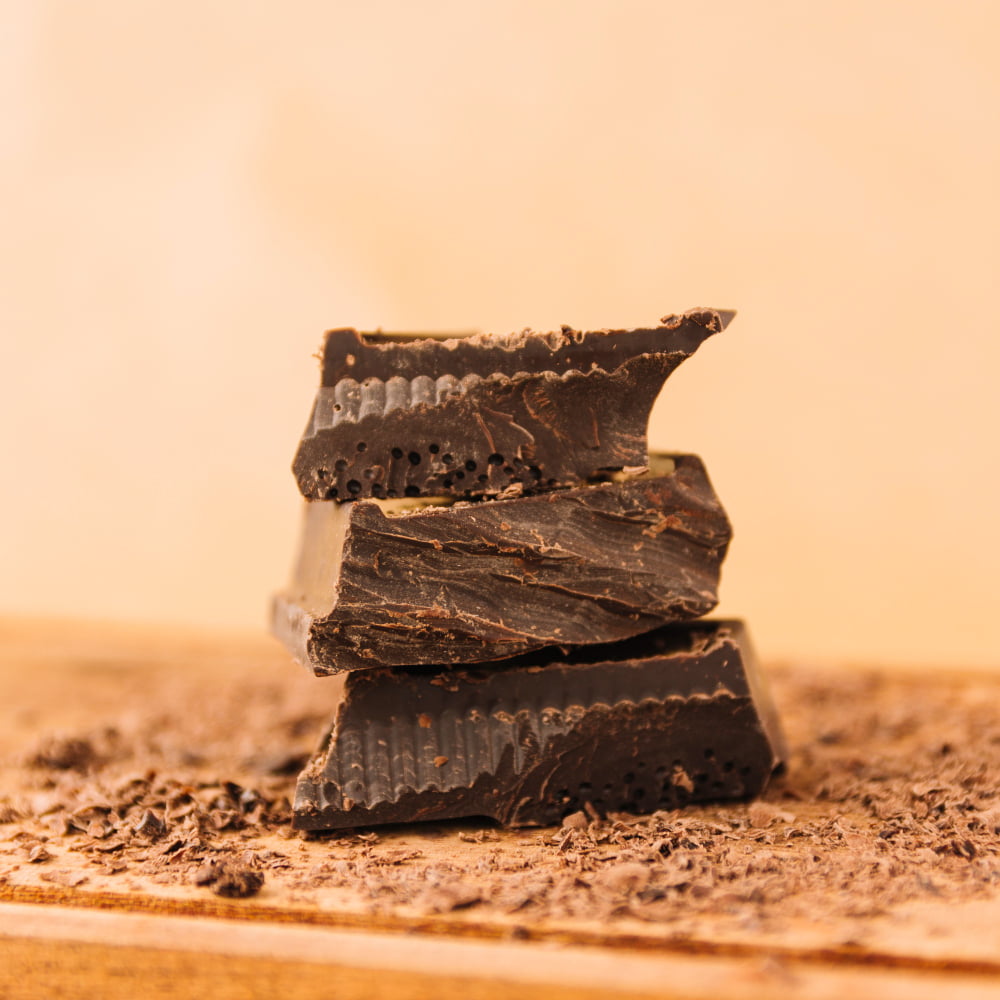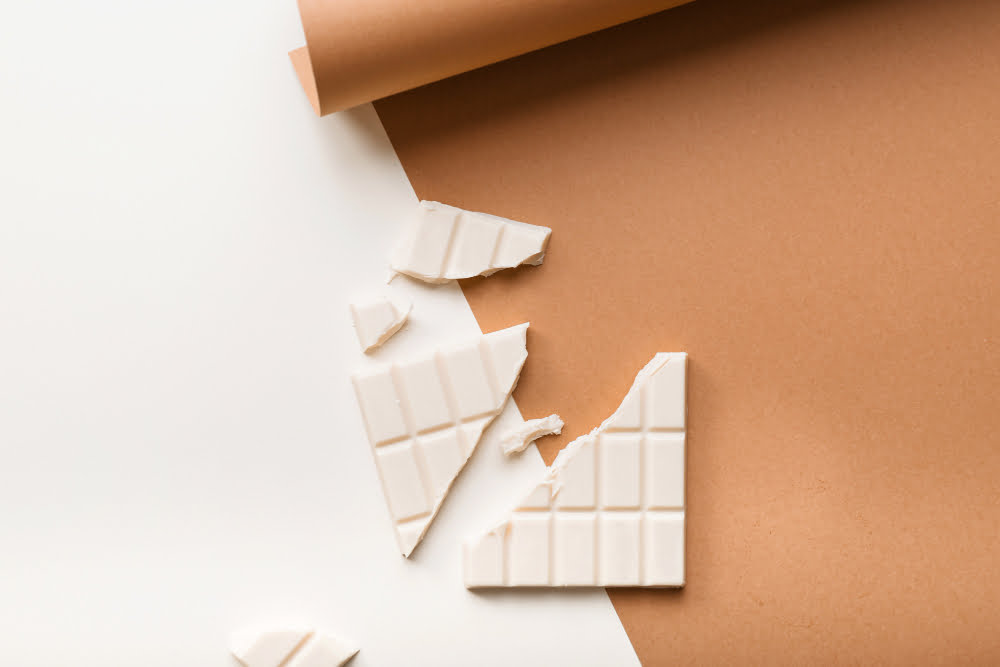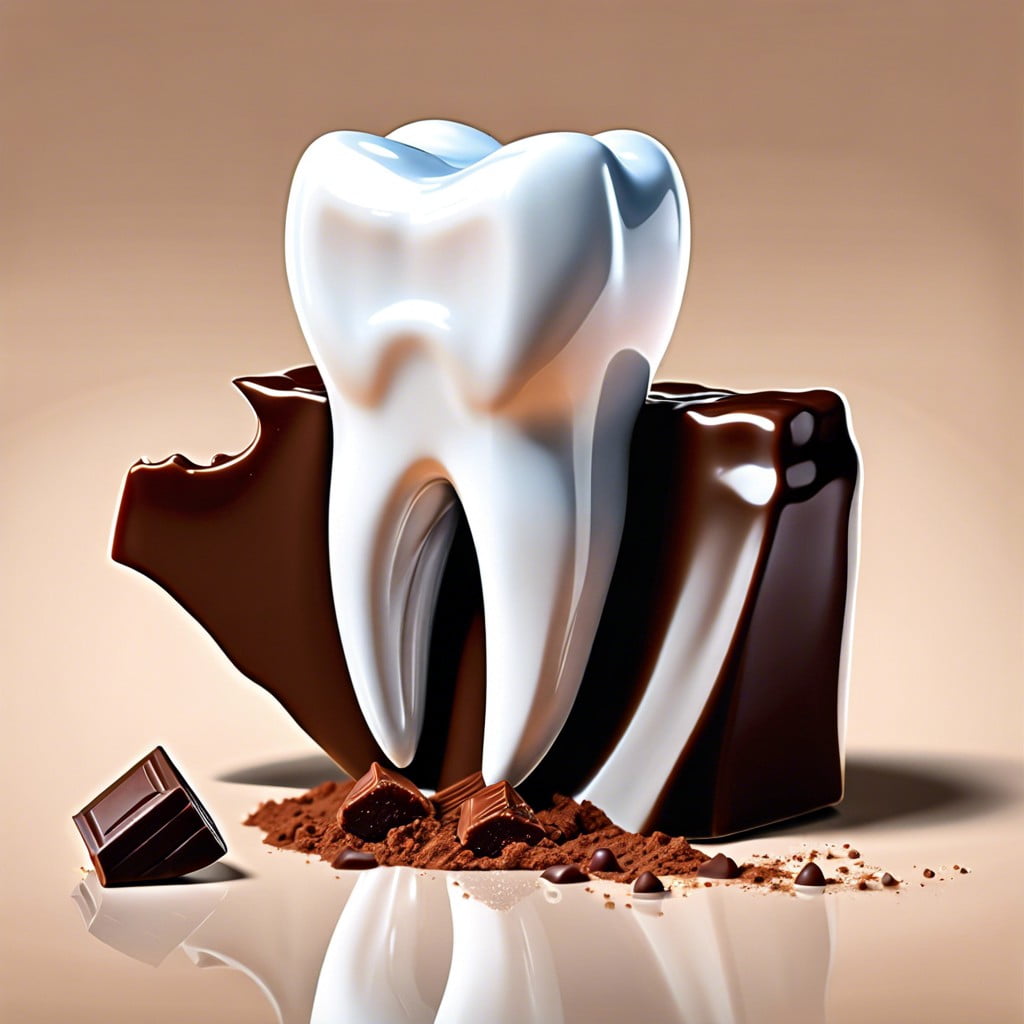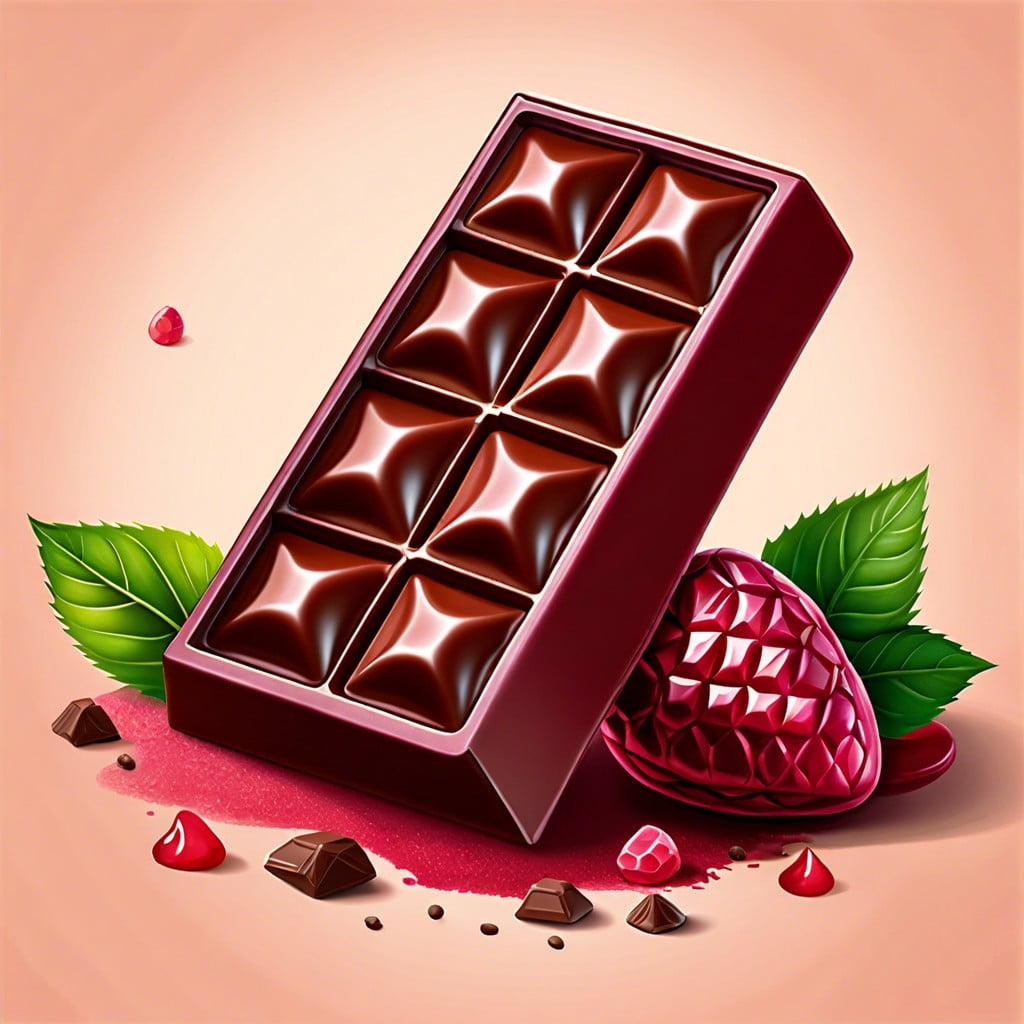Yes, you can eat expired chocolate, but let’s discuss how to determine if it’s still safe and tasty.
Key takeaways:
- Expiration dates are guidelines, not strict rules.
- Dark chocolate outlasts milk chocolate in expiration.
- Sniff test: sour or rancid odors mean discard.
- Texture changes signal chocolate deterioration.
- White film likely bloom, not mold: usually safe.
Inside
Understanding Expiration Dates
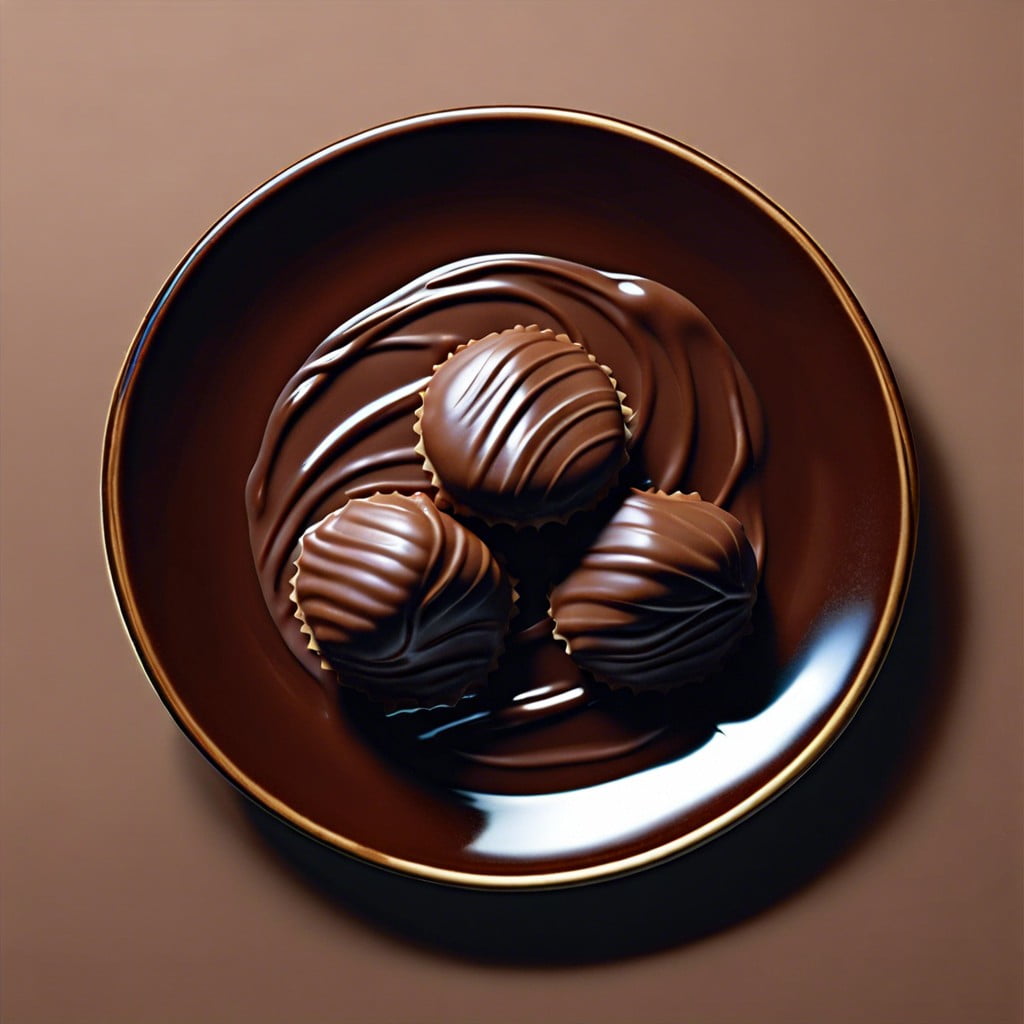
Expiration dates on chocolate are often more of a friendly suggestion than a strict rule. Chocolatiers just want to ensure you’re devouring their masterpiece at its peak. Here are some key points to wrap your head around:
- Best-by vs. Use-by: “Best-by” suggests when chocolate is at its yummiest, while “use-by” is the doomsday clock for taste.
- Dark vs. Milk: Dark chocolate is like the immortal vampire of sweets—it ages with grace, lasting years beyond its date. Milk chocolate, though, is more diva-like, staying fresh for a shorter period due to its dairy content.
- Ideal conditions: Keep your chocolate in a cool, dry, dark place. Think cozy, not freezing. The pantry closet, not Antarctica.
Just remember: these dates are guidance, not a prison sentence. Your senses are the ultimate judge.
Visual Inspection: What to Look for
First, give your chocolate a good once-over. Is it a vibrant, deep brown or has it turned an odd shade of gray? Discoloration can be a sign of fat bloom or something more ominous.
Check for any weird spots or fuzzies. Nope, not an art project—mold loves old chocolate.
Cracks or a broken surface show that time hasn’t been kind to your sweet friend. This can mean it’s dried out, affecting texture and taste.
Does it glisten like a chocolatey superstar or look more like a dusty relic? A shiny surface means it’s still got some life left! If it looks sad and lackluster, proceed with caution.
Smell Test
Give that chocolate a good sniff. Your nose knows! Fresh chocolate often has a rich, inviting aroma. If your chocolate smells off—rancid, sour, or like old gym socks—it’s time to part ways.
Watch out for any strong musty or moldy odors; those are deal breakers. Chocolate absorbs smells from its surroundings, so if it was stored next to last night’s garlic bread, well, you might get an unwanted surprise.
But remember, if the aroma still sings melodies of cocoa and sweetness, you’re probably in the clear. Trust your sniffer. It’s like a chocolate sommelier!
Texture Changes
Smooth, creamy chocolate is bliss. But when it turns gritty or dry, it’s like biting into a disappointment sandwich.
Changes in texture can be a sign that chocolate has seen better days. Here are some clues:
It could get grainy. Temperature fluctuations can cause sugar to crystallize, giving it that unwelcome sandy feel.
Dry or crumbly? Chocolate might have lost its precious cocoa butter. It’s like when you forget to water a plant, and it wilts in despair.
Is it soft or sticky? High humidity may have done a number on it, causing it to absorb moisture like a sponge at a car wash.
Keep your chocolate in an environment where Goldilocks would be happy—not too hot, not too cold, and definitely not too humid.
White Film: Bloom Vs. Mold
A white film on your chocolate can be a bit disconcerting, but it’s usually harmless. It’s often a result of bloom, not mold.
Bloom happens when chocolate gets a bit too cozy with temperature changes. Fat bloom is the result of melted cocoa butter rising to the surface. Sugar bloom occurs when moisture dissolves the sugar, then leaves behind a dusty white layer when it evaporates.
Mold, on the other hand, is much rarer in chocolate. It would look fuzzy, smell off, and definitely not be chocolate’s best look.
So don’t fret if your chocolate has a white film. Give it a sniff and a closer look. You’ll usually find it’s just cosmetic.
Taste Check
Now for the taste test! If the chocolate has passed the visual and smell inspections, break off a piece and let it melt on your tongue.
Does it taste like chocolate heaven or something from a forgotten corner of a kitchen drawer? If it’s grainy or has a strange aftertaste, it’s time to bid farewell.
Old, but still safe, chocolate might taste a bit bland, lacking that rich, cocoa punch. But hey, even if it’s four years past its prime, if it still tastes pretty good, it’s probably fine.
One warning: sour or unpleasantly bitter notes are a red flag. If it tastes like despair, spit it out and grab something fresher. Your taste buds deserve better!
Health Risks of Eating Truly Expired Chocolate
Consuming truly expired chocolate can pose some health risks. First, mold can develop over time, especially if stored improperly. Though rare, eating moldy chocolate might lead to digestive issues and allergic reactions.
Another issue is rancidity. The fat in chocolate can go bad, particularly in milk and white varieties which contain dairy. Rancid chocolate won’t just taste terrible, but could lead to stomach discomfort.
Beware of any weird critters—improperly stored chocolate might become a holiday home for insects. Unappetizing and unhealthy!
Finally, old chocolate can be a breeding ground for bacteria if exposed to moisture. No one likes a chocolate with a side of microbes. So, when in doubt, toss it out.
Storing Chocolate Properly to Extend Shelf Life
Chocolate is a bit of a diva when it comes to storage. Keep it cool, but not cold. A temperature between 65-70°F (18-21°C) is the sweet spot. No one likes a melty mess in their pantry.
Humidity is chocolate’s arch-nemesis. Store it in a dry place, away from anything with moisture. Dampness can lead to sugar bloom, which isn’t harmful but can make your chocolate look like it’s auditioning for a ghost movie.
Big fan of watching TV while indulging? Make sure your chocolate isn’t. Save it from direct sunlight. Excessive light can cause the fats in chocolate to degrade, and no one wants extra crispy chocolate.
In its original packaging, your chocolate feels safe. If you’ve already freed it, wrap it snugly in foil or place it in an airtight container. Keep it away from strong odors—chocolate is like a sponge when it comes to smells, and no one craves onion-infused cocoa.
To fridge or not to fridge? Generally, avoid it. But if your place is hotter than a magma chamber, refrigerate chocolate in an airtight container. Let it warm to room temperature before unwrapping to prevent condensation. Chocolate deserves better than a sweaty coat.
Recycling Old Chocolate: New Treats and Uses
You found an old chocolate bar hiding in the pantry. Congrats! That’s a culinary treasure waiting to happen. Instead of tossing it away, here’s how to transform it.
First, chop it into tiny pieces and melt it down. Now you have a luscious chocolate base for dipping fruits, marshmallows, or even pretzels. Instant fondue party!
Or get fancy and drizzle that melted chocolate over popcorn. Boom, gourmet movie snack!
Feeling crafty? Mix it into cookie dough or brownie batter. Older chocolate adds a richer, deeper flavor.
In a breakfast mood? Stir it into a pot of oatmeal or sprinkle it over pancakes for a morning upgrade.
Have a chilly day? Melt it into warm milk for a decadent hot chocolate that’ll make you feel like you’re sipping luxury.
So many possibilities, so little expired chocolate.
